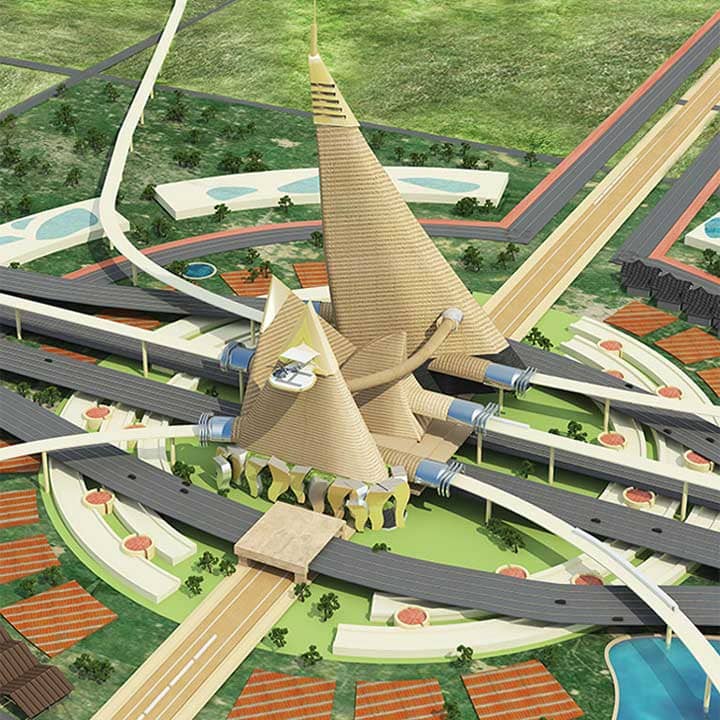Introduction
In a major drive towards environmental conservation and development, a vast plantation drive has been carried out around the SP Ring Road connecting Dholera Expressway. As a part of this initiative, over 84,000 saplings have been planted, ка+Ноегаф утгоиско сока. This will help to increase the green cover, boost the air quality and contribute to local biodiversity. This land has been transformed into a green space that highlights the importance of replanting trees for climate change and creating a healthier environment for the next generation.
The Importance Of Reforestation
It is an essential factor in saving our ecosystem and fighting climate change. It also aids the reestablishment of lost habitats, serving as a refuge for wildlife and helping to diversify the ecology. Trees take in carbon dioxide, removing greenhouse gases from the atmosphere and helping to lessen the impact of global warming. Reforestation also enhances air and water quality, stabilizes soil and prevents erosion.

The SP Ring Road And Dholera Expressway: A Brif Overview
SP Ring Road: The SP Ring Road is a major roadway in the region, encircling the city and providing an important route for transportation. It helps to ease traffic congestion within the city by offering an alternative route for vehicles. The road is well-connected and plays a vital role in linking various parts of the city and surrounding areas.
Dholera Expressway: The Dholera Expressway is a key highway connecting the city to the Dholera Special Investment Region (SIR). It facilitates smooth and quick travel to Dholera, promoting economic growth and development in the region. The expressway is designed to support high-speed travel and reduce travel time between the two locations.
The Initiative To Plant 84,000 Suplings
Objectives
The main goal of the initiative to plant 84,000 saplings around the SP Ring Road and Dholera Expressway is to improve the environment and promote sustainable development. Specific objectives include:
- Enhancing Green Cover: Increase the number of trees in the area to create a greener landscape.
- Improving Air Quality: Trees help absorb pollutants and produce oxygen, leading to cleaner and fresher air.
- Supporting Biodiversity: Provide habitats for various species of birds, insects, and other wildlife.
- Combating Climate Change: Reduce carbon dioxide levels by absorbing it from the atmosphere, helping to mitigate global warming.
- Promoting Community Well-being: Create a healthier and more pleasant environment for local residents and visitors.
Planning And Execution
- Planning: The project began with careful planning, including selecting suitable locations around the SP Ring Road and Dholera Expressway for planting the saplings. Experts chose various native species that would thrive in the local environment.
- Collaboration: The initiative involved collaboration between government bodies, local organizations, and volunteers. They worked together to organize resources, such as saplings, tools, and transportation.
- Execution: The actual planting took place over several weeks. Volunteers and workers dug holes, planted the saplings, and ensured they were securely placed in the soil. Proper spacing was maintained to allow each tree room to grow.
- Maintenance: After planting, the saplings require regular care, including watering, mulching, and protection from pests. The team set up a maintenance schedule to ensure the young trees received the necessary attention to thrive.
Types Of Saplings planted
The initiative to plant 84,000 saplings around the SP Ring Road included a variety of native tree species. These saplings were chosen for their ability to thrive in the local climate and soil conditions. Some of the common types of saplings planted include:
- Neem: Known for its medicinal properties and ability to purify the air.
- Peepal: A sacred tree in India, providing shade and supporting local wildlife.
- Gulmohar: A beautiful flowering tree that adds color to the landscape.
- Banyan: A large tree that offers extensive shade and supports biodiversity.
- Mango: Not only provides delicious fruits but also contributes to the green cover.
Benefits Of The Plantation Drive
Environmental Impact
- Improved Air Quality: Trees absorb carbon dioxide and release oxygen, leading to cleaner, fresher air.
- Reduced Pollution: The saplings help to filter harmful pollutants from the air, such as dust, smoke, and chemicals.
- Enhanced Biodiversity: Planting a variety of trees supports local wildlife, providing habitats for birds, insects, and other species.
- Soil Conservation: Trees help to stabilize the soil, preventing erosion and improving its fertility.
- Climate Regulation: The trees contribute to cooling the environment, reducing the urban heat island effect, and mitigating the impacts of climate change
Community And Economic Benefits
- Improved Quality of Life: The increase in green spaces creates a more pleasant and healthy environment for residents, providing areas for recreation and relaxation.
- Job Creation: The project generates employment opportunities, from planting and maintenance to long-term care of the trees.
- Boosted Local Economy: The beautification of the area can attract more tourists and visitors, stimulating local businesses and services.
- Educational Opportunities: The initiative offers a chance for community members, especially students, to learn about environmental conservation and the importance of trees.
- Property Value Increase: Enhanced green spaces can lead to higher property values in the surrounding areas, benefiting homeowners and investors.
Challenges Faced And Solutions Implemented
Adverse Weather Conditions: Planting saplings during extreme weather conditions such as heavy rains or droughts posed significant challenges.
- Solution: The team selected the best planting seasons and ensured proper irrigation systems were in place to support the young trees.
Limited Resources: Managing a large-scale plantation drive required substantial resources, including saplings, tools, and manpower.
- Solution: Collaboration with local government bodies, organizations, and volunteers helped pool resources and share the workload effectively.
Pests and Diseases: Young saplings are vulnerable to pests and diseases, which can hinder their growth.
- Solution: Regular monitoring and the use of organic pest control methods helped protect the saplings from harm.
Soil Quality: Ensuring the soil was fertile and suitable for planting was another challenge.
- Solution: Soil testing and amendments, such as adding compost and organic matter, improved soil quality and supported healthy tree growth.
Community Engagement: Gaining support and involvement from the local community was essential for the success of the project.
- Solution: Awareness campaigns and involving community members in the planting process fostered a sense of ownership and responsibility.
Future Plans And Maintenance
- Ongoing Care: Regular watering, mulching, and protection from pests will be provided to ensure the saplings grow into healthy trees.
- Monitoring Growth: The trees’ growth will be monitored, and any issues such as disease or damage will be promptly addressed.
- Community Involvement: Continued engagement with the local community will encourage residents to take part in the maintenance and care of the trees.
- Expansion Plans: There are plans to expand the plantation drive to other areas, increasing green cover and environmental benefits.
- Education and Awareness: Programs and workshops will be organized to educate the community about the importance of trees and how to care for them.
Conclusion
In conclusion, the initiative to plant 84,000 saplings around the SP Ring Road and Dholera Expressway is a significant step towards environmental sustainability and community well-being. This large-scale plantation drive has numerous benefits, including improved air quality, enhanced biodiversity, soil conservation, and climate regulation. Additionally, it brings community and economic benefits such as job creation, boosted local economy, and increased property values.
The project’s success depends on ongoing care, monitoring, and community involvement to ensure the saplings grow into healthy trees. With future plans for expansion and continuous education, this initiative stands as a shining example of how reforestation efforts can create a greener, healthier, and more prosperous environment for everyone.



